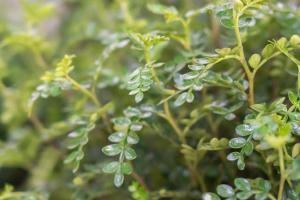How to Fix Standing Water in Potted Plants
Standing water in potted plants can be a common problem that often leads to root rot and other issues. Fortunately, there are several ways to fix this problem and keep your plants healthy and happy. Here are some effective tips you can try:
1. Check for Drainage Holes
The first and most important step to fix standing water in a potted plant is to check for drainage holes. Without adequate drainage, excess water can accumulate and drown the plant's roots. If your pot doesn't have drainage holes, create them using a drill or hammer and nail. You can also purchase specialized plant pots that have already been equipped with drainage holes.
2. Use Peat Moss or Perlite
If your pot has drainage holes but still has standing water, try mixing in peat moss or perlite into the soil. These materials will help to improve drainage by allowing excess water to pass through the soil more efficiently. Aim for a ratio of one-third peat moss or perlite to two-thirds soil for best results.
3. Water Less Frequently
Another common cause of standing water in potted plants is overwatering. If you notice excess water accumulating in the pot's saucer or bottom, it's a sign that you may be watering too frequently. To fix this issue, water less frequently and allow the soil to dry out between waterings.
4. Repot the Plant
If none of the above solutions work, it may be time to repot the plant. The problem could be caused by the pot itself, the soil, or even the root structure of the plant. When repotting, be sure to choose a pot with adequate drainage holes and use fresh soil.
5. Improve Air Circulation
Poor air circulation around potted plants can also lead to standing water and other issues. To improve air circulation, try moving your plants to a new location with more space and better ventilation. You can also use a small fan to circulate air around plants and help to dry out excess water.
Conclusion
Standing water in potted plants is a problem that can be solved using a variety of methods. By checking for drainage holes, using peat moss or perlite, watering less frequently, repotting, and improving air circulation, you can help to keep your plants healthy and thriving. Try these tips today and say goodbye to standing water for good!

 how many times do yo...
how many times do yo... how many planted tre...
how many planted tre... how many pine trees ...
how many pine trees ... how many pecan trees...
how many pecan trees... how many plants comp...
how many plants comp... how many plants can ...
how many plants can ... how many plants and ...
how many plants and ... how many pepper plan...
how many pepper plan...
































